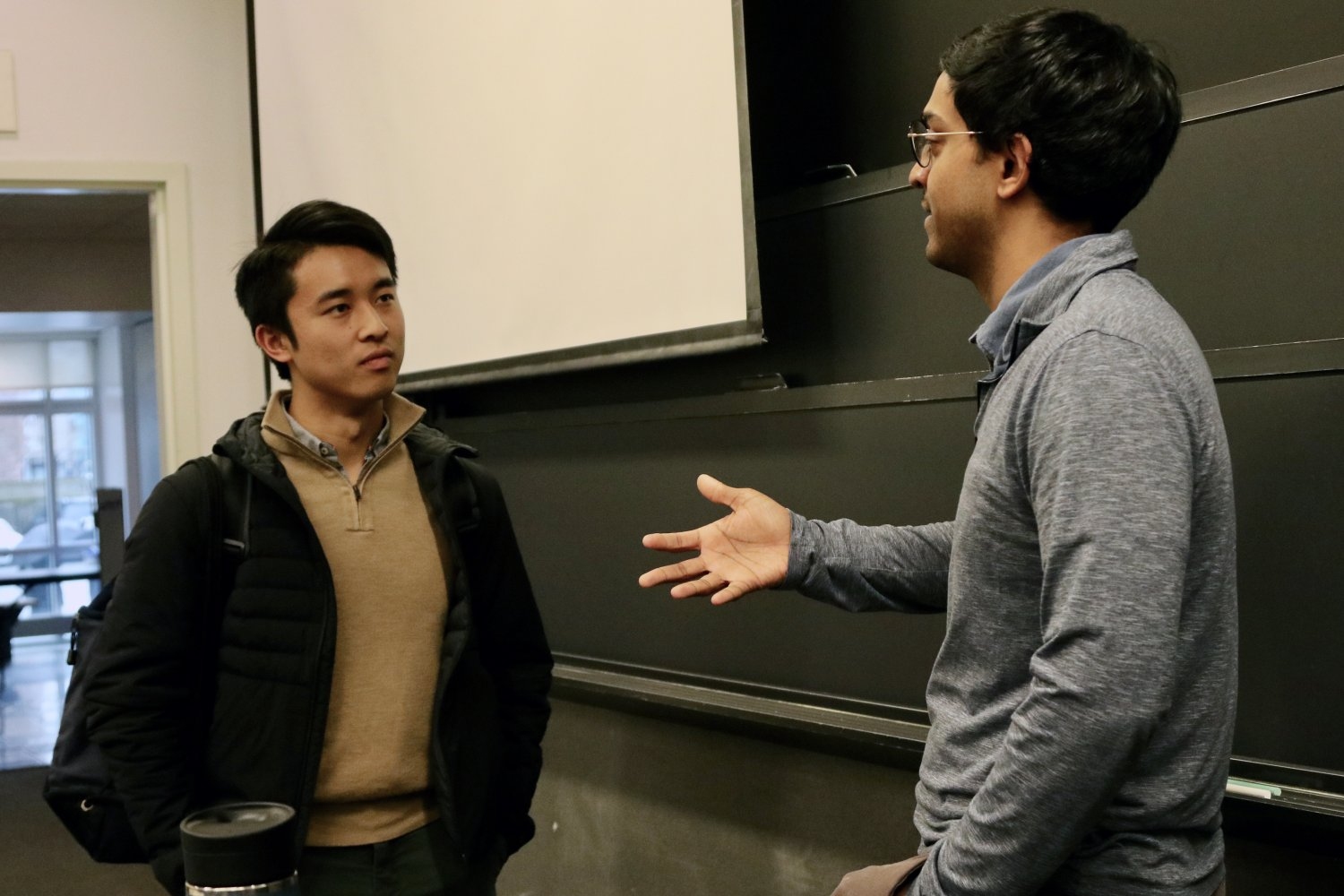Imagine a world in which some important decision—a judge’s sentencing recommendation, a child’s treatment protocol, which person or business should get a loan—was more reliable because a well-designed algorithm helped the key decision-maker arrive at a better choice. A new MIT economics course explores these intriguing possibilities.
Class 14.163 (Algorithms and Behavioral Science) is a new interdisciplinary course focused on behavioral economics that studies the cognitive abilities and limitations of human beings. The course was co-taught this spring by Assistant Professor of Economics Ashesh Rambachan and Visiting Lecturer Sendhil Mullainathan.
Rambachan, who is also a principal investigator in MIT’s Information and Decision Systems Laboratory, studies economic applications of machine learning, focusing on algorithmic tools that guide decision making in the criminal justice system and consumer lending markets. He also develops methods for determining causal relationships using cross-sectional and dynamic data.
Mullainathan will soon join the Department of Electrical Engineering and Computer Science and Economics at MIT as a professor. His research uses machine learning to understand complex problems in human behavior, social policy, and medicine. Mullainathan co-founded the Abdul Latif Jameel Poverty Action Lab (J-PAL) in 2003.
The goals of the new course are both scientific (to understand people) and political (to improve society by improving decisions). Rambachan believes that machine learning algorithms provide new tools for both the scientific and applied goals of behavioral economics.
“The course explores the use of computer science, artificial intelligence (AI), economics, and machine learning in the service of improving outcomes and reducing biases in decision-making,” says Rambachan.
Rambachan believes there are opportunities for ever-evolving digital tools like artificial intelligence, machine learning, and large language models (LLMs) to help reshape everything from discriminatory sentencing practices to health care outcomes among underserved populations.
Students learn how to use machine learning tools with three main goals: to understand what they do and how they do it, to formalize behavioral economics insights so that they fit well in machine learning tools, and to understand areas and topics where the integration of behavioral economics and algorithmic tools may be most fruitful.
Students also generate ideas, develop related research, and see the bigger picture. They are guided to understand where the insight fits and see where the broader research agenda leads. Participants can think critically about what supervised LLMs can (and cannot) do, to understand how to integrate these capacities with behavioral economics models and insights, and to identify the most fruitful areas for applying what research reveals.
The dangers of subjectivity and bias
According to Rambachan, behavioral economics recognizes that there are biases and errors in our choices, even in the absence of algorithms. “The data used by our algorithms exists outside of computer science and machine learning and is often created by humans instead,” he continues. “Understanding behavioral economics is therefore essential to understanding the effects of algorithms and how to build them better.”
Rambachan tried to make the course accessible regardless of the academic background of the participants. The class included advanced students from various disciplines.
By offering students an interdisciplinary, data-driven approach to exploring and discovering ways algorithms could improve problem-solving and decision-making, Rambachan hopes to build a foundation upon which existing systems of jurisprudence, health care, and consumer lending can be redesigned. and industry to name a few areas.
“Understanding how data is generated can help us understand bias,” says Rambachan. “We can ask for a better outcome than what currently exists.”
Useful tools for rethinking social operations
Economics doctoral student Jimmy Lin was skeptical of Rambachan and Mullainathan’s claims when the course began, but changed his mind as the course continued.
“Ashesh and Sendhil began with two provocative claims: The future of behavioral science research will not exist without AI, and the future of AI research will not exist without behavioral science,” says Lin. “Over the course of the semester, they deepened my understanding of both fields and walked us through numerous examples of how economics informed AI research and vice versa.”
Lin, who previously did research in computational biology, appreciated the instructors’ emphasis on the importance of “producer sense,” thinking about the next decade of research rather than the previous decade. “This is especially important in a field as interdisciplinary and fast-moving as the intersection of artificial intelligence and economics—there is no old established literature, so you are forced to ask new questions, invent new methods, and build new bridges.” he says.
The speed of change that Lin refers to is also an attraction for him. “We see black-box AI methods facilitating breakthroughs in mathematics, biology, physics and other scientific disciplines,” says Lin. “AI can change the way we as researchers approach intellectual discovery.”
An interdisciplinary future for economics and social systems
Studying traditional economic tools and enhancing their value with artificial intelligence can bring fundamental changes to how institutions and organizations teach and empower leaders to make decisions.
“We’re learning to track shifts, modify frameworks, and better understand how to deploy tools in the service of a common language,” says Rambachan. “We must constantly question the intersection of human judgment, algorithms, artificial intelligence, machine learning and LLM.”
Lin enthusiastically recommended the course regardless of student background. “This class should be taken by anyone with a general interest in algorithms in society, applications of artificial intelligence across academia, or artificial intelligence as a paradigm for scientific discovery,” he says. “Each lecture felt like a goldmine of insights into research, new areas of application and inspiration to create new, exciting ideas.”
The course, Rambachan says, argues that better-constructed algorithms can improve decision-making across disciplines. “By creating connections between economics, computer science and machine learning, we may be able to automate the best human decisions to improve outcomes while minimizing or eliminating the worst,” he says.
Lin remains excited about the course’s unexplored possibilities. “It’s a class that gets you excited about the future of research and your own role in it,” he says.
